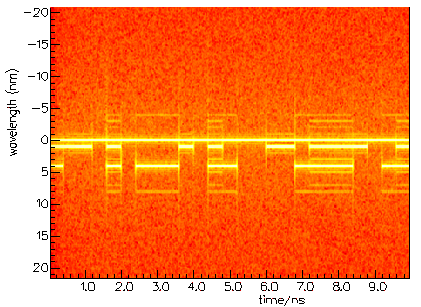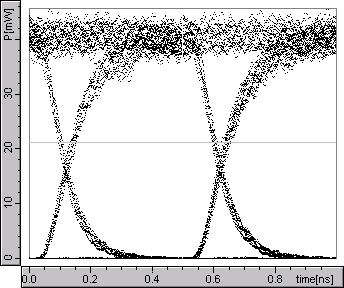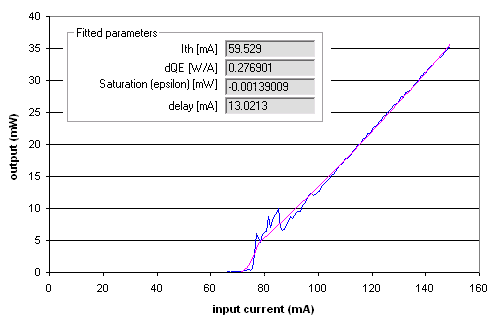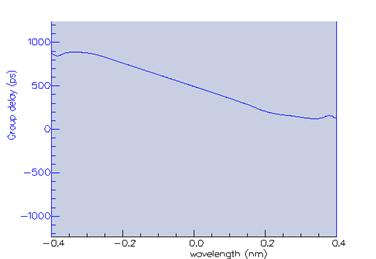|
Introduction
Features
‣
Active Module
‣
Electrical model
‣
Laser Geometries
‣
Analysis
‣
Building Block System
‣
Link to
FIMMPROP
‣
Link to Harold
‣
Link to EPIPPROP
‣
Scripting / Optimisation
Applications
Options
Design
Kits
Publications
Download
Brochure
Request evaluation
|
Analysis Tools
PICWave provides you with a large variety of analysis utilities.
- Optical spectra (spectra of complex optical amplitude, including optical phase) - time averaged and
time-evolving

Time evolving optical spectrum illustrating the effect of four-wave
mixing in an SOA:
although only three channels are injected (0nm, +1nm and 44nm), you can
observe power
in many other wavelengths generated by four-wave mixing
- Intensity spectra (spectra of optical intensity) - time averaged and time-evolving
- RIN Spectra

RIN spectrum for a InGaAsP CW laser
- FM and AM Spectra (S21)

Frequency (orange line) and amplitude (blue line) modulation response of a InGaAsP Fabry-Perot
laser
obtained by injecting a CW laser (with noise sources switched off) with
a small current impulse
- Eye Diagrams

Eye diagram for the simulation of the output of an Active 2R
Regenerator,
including noise due to spontaneous emission and recombination
- LI curves with threshold and differential efficiency
measurements

LI curve fitting for an InGaAsP distributed feedback (DFB) laser
- Group delay and group velocity dispersion spectra


Group delay and dispersion spectra of a tanh-apodised Bragg grating,
as might be used for dispersion compensation at the end of a standard telecommunications fibre.
- Longitudinal and lateral profiles (showing current
spreading, carrier density, optical power, current distribution)

(a)
(b)
Longitudinal hole burning in a quarter-wavelength shifted DFB laser:
(a) optical power along the z-axis (blue: total, green: forward, red: backward)
and
(b) carrier density along the z-axis at the centre of the laser
|







